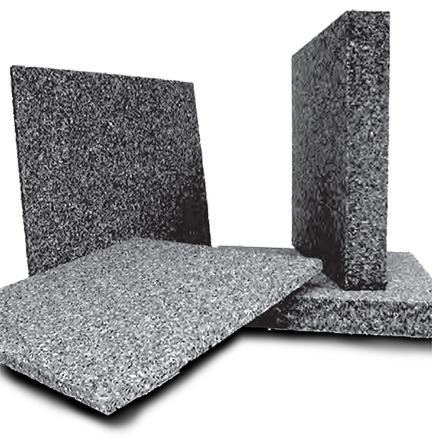Treatments to reduce AC noise
Air-conditioning can contribute significantly to noise within your vessel. On smaller boats, the compressor typically goes in the machinery space, which should be insulated. Sometimes it is placed in a cabinet near where people tend to sit. While not as loud, because it’s closer to people, it may seem louder.
In each case, insulating the space should be your first treatment. If there’s a dedicated space, QuietPro panels are a good solution, and composite insulation will help if there is room.
Best bet: QuietPro panels
Second step: 1 inch of 1lb vinyl foam composite lining the space.
Your second point of serious consideration should be the mounting system under the AC machinery. Most likely, the right solution will be a BRB mount or ring bushing mount, but for best results call us with the weight and specs of the unit, and we’ll tell you the best mounting solutions.
More about mounting systems for auxiliary equipment
The next treatment to consider is to focus on the vents channeling the AC. Both return air and output air can lead to noise. One reason is that many naval architects try to keep these vents on the small side, making the velocity of the air much higher. The Bernoulli effect applies to vent systems, meaning that the smaller the diameter of the vent, the faster the air has to move to get through it. Faster air movement can lead to more rattle, more pressure on the system producing structureborne noise, and more particles picked up by the air and causing noise as it bounces and blows around in the vents.
One solution is to consider larger vents – they will reduce bumping and rattling sounds, reducing your airflow noise to a less distracting general gray noise.
For returning air vents, it is wise to install a large louver right in front of the return vent (it will break up the air flow being sucked into the vent). Then position a baffle between the louver and the machinery, absorbing the airflow inconsistencies and reducing the vibrational impact on the rest of the system.
Other considerations for your ventilation system can be similar to considerations for an exhaust system – you want to combine strategic placement of baffles and fastening solutions. Examine your vents to make sure you always break the line of sight between machinery – the source of much of the noise – and habitation areas. If you have a clear line of sight, find a way to use a baffle or panel to break it. Not doing this is the equivalent of insulating your house, then leaving the front door open.
QuietPro panels can also be used to good effect inside a ventilation system, absorbing some of that wind noise from within the system.